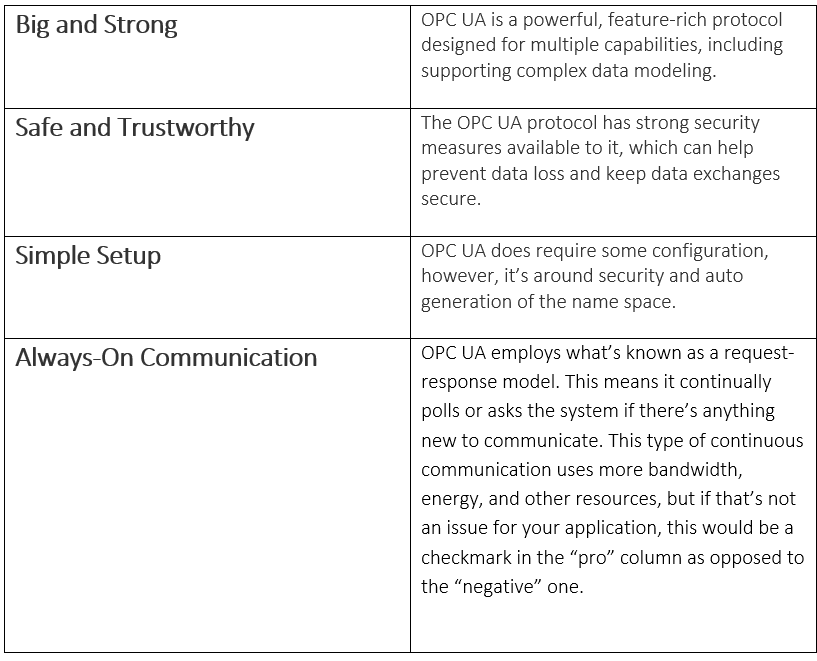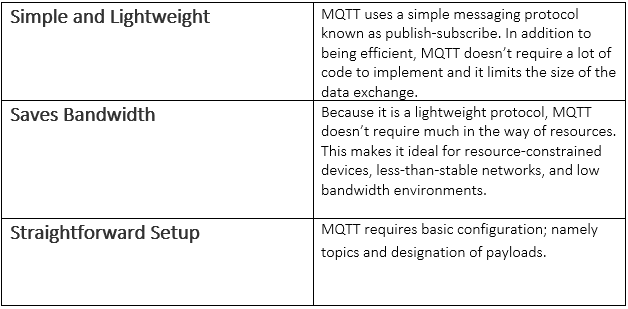
Although communication can be a complicated thing among humans (think of the childhood game of “telephone”), it can be even more complicated when it comes to machine-to-machine communication. That’s because M2M typically involves a plethora of disparate devices from a range of different manufacturers with each speaking their own language. In other words, nothing can be understood.
So, when it comes to industrial automation and Supervisory Control and Data Acquisition (SCADA) systems or the Cloud, choosing the right communication protocol is essential. But which is best among many communication protocols currently available?
Both protocols are open standard protocols, which means they are open for anyone to use and are system and manufacturer agnostic (not specific to any).
OPC UA vs. MQTT: Key Distinctions
Let’s take a comparative look at the primary differences between OPC UA and MQTT.
OPC UA

What OPC UA Does Best: It excels at handling large, important, complex data exchanges.
MQTT

What MQTT Does Best: It provides efficient, reliable, uncomplicated messaging.
Which Protocol Should I Choose?
Now that you know the key differences between the two protocols, you may be wondering, “Which protocol is best for SCADA or Cloud connectivity: OPC UA or MQTT?”
Again, it depends. The specific requirements of your application really do matter when choosing between OPC UA and MQTT. You’ll want to consider an array of factors, including your security needs, network conditions, device constraints, and the complexity of your data.
3 Reasons to Choose OPC UA Over MQTT for SCADA and Cloud Connectivity
Because of the complex nature of SCADA systems and the importance of securing data in the Cloud, OPC UA is almost always the better choice over the simple, lightweight MQTT protocol. Here are the top three reasons why. (Hint: They all have to do with integration.)
- Integration is optimized for interoperability because SCADA systems can act as an OPC UA client and connect to OPC UA servers for ease in reading and writing across a variety of hardware and software environments.
- Integration is streamlined because OPC UA’s information modeling capabilities enable complex industrial data structures. This means it’s easier to integrate with SCADA applications and manage data effectively.
- Integration is simplified because many manufacturers have built-in support for OPC UA, which means far less need for custom solutions.
If you’re a systems integrator, then you know one of the biggest challenges you continue to face is figuring out which technologies can help you do what you need to do. To learn more about OPC UA, gateway solutions, or integration with your SCADA, contact us today.






